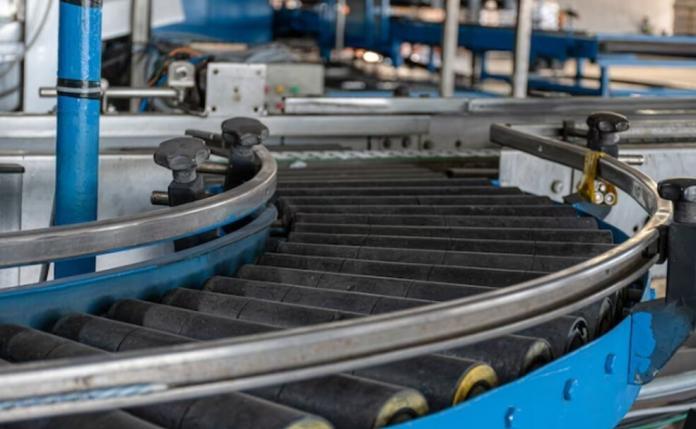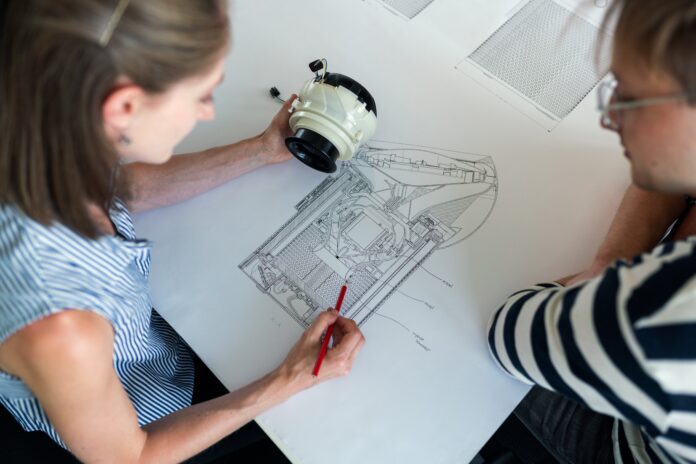Transferring granular and powdered products can often be a challenge. But you can easily transfer these materials with the help of pneumatic conveying. When you try to transfer these powered products with an efficient means, you might have to face a lot of losses.
There’s also a possibility that these products get damaged during transportation. But you can eliminate these problems with the help of pneumatic conveying.
Let’s explore more about it.
A] What Is Pneumatic Conveying?
Pneumatic conveying is the system of pipelines that you use to transport powdered and granular products in bulk. These pipelines are airtight and enclosed. When you put the materials in these pipelines, they transport them by pumping air.
Usually, pneumatic conveying involves a combination of airflow and some type of gas. But sometimes, it can also use airflow and pressure to transfer products without any loss.
To ensure that the products reach their desired destination safely, you can apply positive or negative pressure on the airflow. So, pneumatic conveying is often considered the best method of moving granulated or powdered products.
B] Advantages Of Pneumatic Conveying
Pneumatic conveying systems offer the following benefits.
- You can set up pneumatic conveyors at long distances. They can be set up horizontally and vertically. So, you can transport products as your space and resources allow.
- Traditional conveying systems took up a lot of time and space. But as compared to the traditional systems, pneumatic conveyors do not need a lot of floor space. You can easily locate them anywhere within your factory premises.
- These conveyors come with a flexible design. So, you can easily use them around any equipment that you wish.
- As mentioned, pneumatic conveying systems have an enclosed design. You can rest assured that any contaminants or dust doesn’t enter the pipeline. Your products stay safe and secure.
- Pneumatic conveyors allow you to set a controlled temperature to transport your products.
- This system allows you to set up multiple pick-up and discharge points.
- There are fewer moving parts in pneumatic conveyors. So, their maintenance is less than other mechanical systems.
C] Disadvantages Of Pneumatic Conveying
There are some disadvantages associated with the pneumatic conveying systems. Let’s take a look at them.
- If you want to transport products of high volume, you’ll not be able to do it with pneumatic conveyors. Most of these pipelines measure almost 3 to 12 inches. So, this system can be a downside if most of your products are of high volume.
- Blowers and fans that you use in this system create loud noises. It can be a little irritating. However, you can fix these noises by using various sound-enclosing systems.
- Pneumatic conveyors can cause product damage to wet and fragile products. If your products get wet, they can end up plugging the pipeline. Likewise, if the products are way too fragile, they might not be able to bear the high pressure, air velocity, and sharp turns that come in the pipelines.
- There’s a use of dust collectors in pneumatic conveying. You might be able to save your products from dust and other chemicals, but you end up releasing a lot of dust into the atmosphere.
- These systems often have limited scalability.
D] How These Systems Work
Now that you know the advantages and disadvantages of pneumatic conveying systems, let’s take a look at their types and how these systems work.
1. Types Of Pneumatic Conveying Systems
The most common types of pneumatic conveying systems that you’ll find in the market are the dilute-phase and the dense-phase systems. Pressure or vacuum systems are also common. You might also come across positive and negative pressure systems.
Each of these conveying systems is different. You might have to consider what kind of material you’re transporting. It’s also essential that you consider the volume you want to transfer and the air pressure you need to transfer these products safely.
2. Working Principles
The basic thing on which the pneumatic conveying system works is the air. This system uses airflow to transport the material.
If you use a dilute-phase pneumatic conveying system, you’ll see that the materials are suspended in a high-velocity air stream. The dense-phase systems use slower air velocities and higher material concentrations.
Again, you would need to consider the properties of the materials to choose a system that works best for you.
3. Components of a Pneumatic Conveying System
The pneumatic conveying system contains the following components.
- An air source
- Conveying pipeline
- Material feed
- Receiving hopper
Each of these materials has a different role in helping in the efficient transportation of the materials.
4. Applications Of Pneumatic Conveying
There are plenty of industries where pneumatic conveying helps a great deal. Some of these industries include:
- Food processing
- Pharmaceuticals
- Chemical manufacturing
- Agriculture
In these industries, you can use this system to transport flour, sugar, cement, plastic granules, and much more.
E] Challenges With Pneumatic Conveying Systems
Undoubtedly, a pneumatic conveying system offers you one of the most efficient methods of transporting products. But this system comes with its own set of challenges. For example, you might have to face the material degradation and the wear and tear in the pipeline.
Apart from this, pneumatic conveying systems also require a lot of maintenance. You’ll be able to keep these systems running for long only when you maintain them regularly.
So, you should conduct regular inspections of these systems and schedule cleaning. If you don’t address these minor concerns, you might have to bear a lot of costly breakdowns.
Conclusion
Transporting granulated and powdered products can be a hassle. It requires a lot of expertise to ensure that there’s no loss or damage to these products. But if you use pneumatic conveying systems, you can easily transport these materials to where they’re supposed to reach.
These systems offer you an efficient and versatile solution. As compared to other mechanical systems, they leave a minimal impact on the environment. That’s why these systems are the most preferred choice in many industries.
If you understand how these systems really work and how to choose one that meets your needs, you’ll be able to derive the benefits from them.
You might also like,








